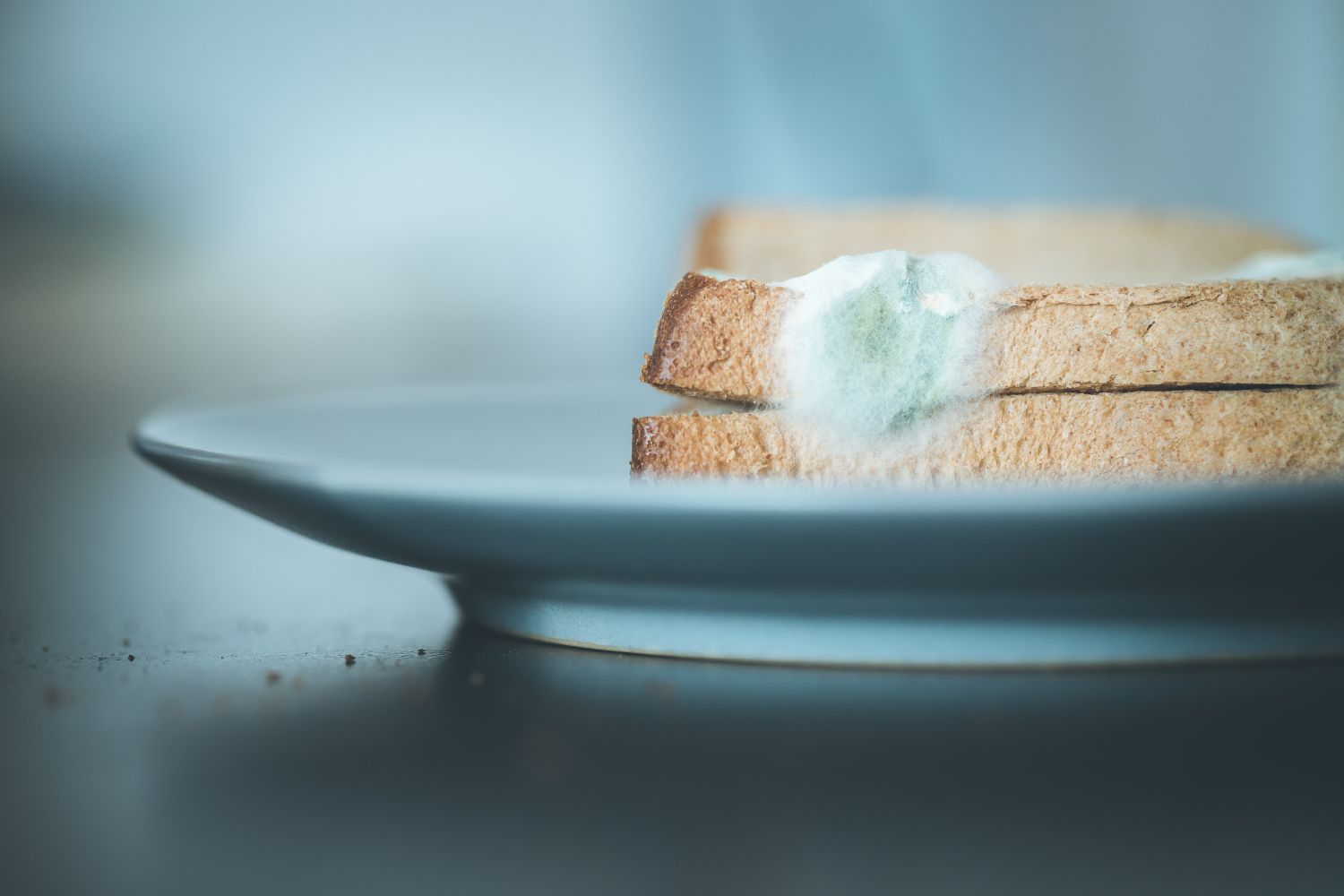Dust is formed by tiny particles of solid matter floating in the air. Dust is usually lifted by the wind from where the dust originated, and an air current carries the dust until it, under the influence of Earth’s gravity or carried by rain, falls to Earth.
Dust should be wiped and cleaned using a wet cloth. Wetting the cloth prevents dust from dispersing. The dust sticks to the cloth and doesn’t fall down the floor. After the dust is wiped with a cloth, you should vacuum the floor to pick up any particles that fell.

It is impossible to get rid of dust forever. Those small particles are formed from the inside and the outside. The outside dust is most commonly from the ground, while the house dust is particles from dead cells fibers.
Where does the dust come from?
To begin with, we distinguish two types of dust, internal and external. And no matter how hard you try, both will always be present in your home, except that in an apartment with a few windows, external dust will be less present.
1. External dust
More than 60 percent of the dust comes from outside – it is made up of particles from the soil and air. The remaining part consists of particles from the fabric of furniture and carpets and dead cells of human skin. Therefore, dust is one very diverse mixture, and it is difficult to prevent it precisely because it comes from all sides.
Since most of the dust comes from outside, particles of hazardous substances such as lead and arsenic are possible, which are brought into homes primarily through footwear and clothing. They can sometimes be dangerous for children and people with respiratory problems, due to various allergies and a weakened immune system.
The largest natural source of dust is the soil of the Earth. With the help of the wind, small particles of soil are blown away and moved over long distances, and enter our homes. Ocean and sea salts are also dust particles. Saltwater when dried in the air leaves grains of salt which are also carried away by the wind.
Volcanoes, deserts, and forest fires also make a significant contribution to dust generation. Flower pollen, animal hair, spores, and fungi are all part of the dust.
2. Internal dust
The composition of the internal dust is very logical, it is the hair of our pets, the remnants of their skin, fine textile fibers, human skin cells, human hair, and food particles. All the dust is constantly in motion and thus penetrates our housing.
Its particles larger than 10 microns settle quickly on the surface of objects and the floor, and we can easily remove them with a damp cloth. The most dangerous for humans are dust particles smaller than 5 microns. We cannot see them, and they settle on the surface for a very long time, due to their low weight. It is these particles that most easily penetrate our body through the airways.
House dust consists of 35% mineral particles, 12% paper, and textile fibers, 19% flakes of our skin, 7% pollen, 3% smoke and soot particles, 24% particles of unknown origin.
Organic dust is not as dangerous for apartment dwellers as a mixture of mineral particles. The source of this type can be mineral wool or glass wool that has insulated the walls of some houses.
In the dust of smoking rooms, the chemical element cadmium has been discovered, which is very toxic and dangerous to human life.
In addition to not looking hygienic and giving a bad image of your tidiness, dust is also a very “fertile ground” for various insects and allergens. The most famous inhabitants of dust are mites.
Like any animal, mites produce waste and thus spread diseases that can be transmitted by air. The good thing is that mites can be rid of by washing in hot water or extreme cold, and vacuuming and wiping the dust will reduce their natural resources for survival.
Some surfaces collect more dust than others. For example, weak electrical charges in your sound system, television screen, and computer attract a lot of dust. Under the influence of air currents, dust forms flakes, which revolve around the earth and collect more and more dust.
How do I prevent dust?
The best way to avoid bringing dangerous particles into your home from the outside is to leave your shoes outside the rooms you are staying in and place them in shoe cabinets. This will avoid spreading them to other rooms. Shoes in particular are one of the largest sources of dust particles in your home and therefore need to be taken off as soon as you enter your home.
In addition to taking off your shoes, it is important to care for your doormat. Since it is located outside the premises of our homes, we may often forget about it and wash it thoroughly only when all the other carpets in the house are cleaned. However, to reduce the intake of dust particles in the home, it is necessary to vacuum it at least every other day.
Don’t forget the vacuum cleaner bags. These items are full of dust and it is recommended to change them every 20 days. Also, if you are buying a new vacuum cleaner, we advise you to opt for one that has a water tank instead of bags. Water prevents dust particles from returning to space.
How often you vacuum thoroughly depends on how many housemates you have. If you have a pet with your family, it is advisable to vacuum every day. If not, you can vacuum thoroughly once a week, and only vacuum the surfaces you walk on the most every day.
Mattresses and pillows are the biggest sources of allergens – all kinds of particles, both those that are more dangerous to health and those that are harmless. You can simply clean the mattress, and the most important thing is to vacuum it.
You probably have that one big colorful duster at home with a handle. Although it is a polyester or microfiber that attracts particles by electrostatic action, after too many particles accumulate, they will start falling out again around the room. Instead, to wipe off the dust, use microfiber cloths that you can then wash and reuse.
Vacuuming will remove dust from your floor and carpet but on a sunny day, you can see dust particles still flying in all directions. To prevent air dust from settling on the furniture again after vacuuming, make a draft or turn the air conditioner on to the fan function. This will blow out and expel tiny particles from the room.
The key to cleaning dust is not to scatter it around the room but to collect and remove it. In a bowl with half a liter of lukewarm water, drip a few drops of essential oil as desired or olive oil. Dip a cotton cloth, wring it out well and wipe the wooden and plastic surfaces with it. For the glass, use a mixture of vinegar and water.
Carpets are the main collectors of dust and that is why it is very important to clean them now and then in detail. The vacuum cleaner will only superficially remove dust, and the bulk is hidden between the threads. Once a month, take out the carpet on the balcony or in the yard and knock the dust out of it.
How often to clean?
If you ask anyone how often to clean the dust, they will tell you to do it regularly. However, how often you need to wipe off the dust depends on the room.
The bedroom does not require as much cleaning work as some other rooms in your home. You need to clean the dust under the bed more often than you think. The advice is to do it every week, and if someone in the house has asthma or allergies, twice a week. However, the children’s bedroom should be cleaned and vacuumed several times a week.
Regular washing of bedding in warm water, as well as vacuuming curtains and furniture, is one way to reduce the amount of dust. If possible, use a vacuum cleaner with a HEPA filter because it stops even the smallest dust particles.
Unlike the bedroom, the kitchen needs to be washed and cleaned more often. After cooking, be sure to wipe all work surfaces and surfaces, wash the kitchen table, put dirty dishes in the dishwasher, and remove all those foods that you used and no longer need. Every food residue contributes to the accumulation of dust.
We spend most of the day in the living room. The need to clean and wash the living room largely depends on whether you live alone or in a large family, but also on whether you often get guests who mostly stay in this room. Living room floors should be cleaned at least twice a week, and more often if you have pets.
Accumulated dust on shelves, cabinets, and tables should be wiped two to three times a week. In addition to vacuuming carpets, tiles, or parquet, furniture such as sofas or armchairs should also be vacuumed once a month.
The bathroom is the room that, along with the kitchen and dining room, gets the dirtiest, so regular cleaning is necessary if you care about hygiene. It should be cleaned daily, and if it is cleaned regularly, it is enough to spend a few minutes a day wiping the dust that collects.
You should vacuum the whole house, or the apartment, once a week. Before you vacuum, wipe off the dust from every surface. You won’t be able to collect all the dust. Some of it will fall on the floor and that’s when you should vacuum, to collect the remaining particles.
Why is it important to clean the dust?
Dust particles can lead to various types of ailments and diseases, especially in children, the elderly, or those with weakened immunity. They enter the body by inhalation or absorption through the skin. Children are especially sensitive because of the habit of touching all kinds of surfaces and then putting their hands in their mouths.
Allergies, asthma, itchy skin and eyes, runny nose, sinus problems, eczema, and bronchial infections are the most common effects of dust in the house. The symptoms of eczema often worsen due to dust and can turn into a condition known as chronic dermatitis.
Autumn and winter are the times when the number of mites in a home increases because the windows are closed most of the time. Up to 500 mites can live in one gram of dust, whose feces are the main cause of dust allergy.
In some cases, they are associated with the development of nasal polyps. These are small lumps that appear in the nasal cavity and cause inflammation in the nose. Although they are not considered serious, they can be very uncomfortable.
Dust allergy often impairs airway function and can cause asthma symptoms such as coughing, a feeling of tightness in the chest, and difficulty breathing.
People with a dust allergy often suffer in their own homes, especially during or immediately after cleaning, when dust particles are in the air, making them easier to inhale.
How do I clean the dust most effectively?
Dust causes allergies and you should try to remove it from the house as much as possible, but few do the job exactly as it should. In the case of dusting, using antibacterial spray and wet and then dry cloth is always a better option.
Dry wiping dust simply lifts it into the air, and it falls back on the household items. Use at least some cleaning or polishing agent instead. The main purpose of wiping off the accumulated dust is not just to scatter it around the room, but to collect it and remove it permanently.
You should use a wet cloth to collect the dust. Put a few drops of essential oil in a bowl with half a liter of water. Then dip a cotton cloth in the resulting liquid, squeeze it well, and use it to wipe the surface where the dust has accumulated. Rinse the cloth in between wipes, if there is too much dust on the cloth, dust won’t be able to stick to the cloth and it will wall down.
It is never wise to apply any polish or cleaner directly to the surface you are treating. In this way, a thin film can be created over time, which will make cleaning more difficult because you will have trouble removing it, so the surface may remain stained or even slippery if, for example, you wash parquet.
First, remove dirt from the tallest items in your room, such as ceilings, high shelves, and cabinets. Then continue cleaning towards worktops and tiles. Then move on to places you may have missed.
Forget about using a duster that just shifts dust from one surface to another. Instead, get a microfiber cloth or an electrostatic cloth that will collect the dust and keep it on. After that, the cloth should be washed and the dust in the house will be significantly less.
Air conditioners and heaters can hide large amounts of dust that we often cannot or simply forget to clean. Given this, the only smart and functional solution is to clean them regularly so that the same dust does not spread through the room when they are used.
Don’t forget the ventilation openings either. We often forget about these parts in the home, and they have a thick coat of dust that quickly disperses throughout the house every time you turn on the ventilation. Next time use a vacuum cleaner to simply pick up all the dirt you see, and it would be good to do it as often as possible.
Vacuum cleaner bags are often the place where all the dust from the house collects during vacuuming. That is why you must change them regularly so that the same dust does not end up all over the house again.
If your vacuum cleaner has a filter, then be sure to wash it regularly – the reason is the same. Filters are designed to attract and retain frequent dust, which is why it is quite logical that they will spread around the room if we do not change the filters regularly.
Read more and order
-
How Long Does Dry Cleaning Take?

How Long Does Dry Cleaning Take? Many ask how long dry cleaning takes, and the answer can vary depending on various variables. However, it generally takes an average of 8-48 hours for the cleaning process to finish, but this could be further extended in cases where multiple items need to be cleaned on the same…
-
How To Clean Suede Jacket? – A Complete GUIDE

Suede jackets are durable, beautiful, and pleasant to the touch. When it’s cold, they keep warm. When it’s hot, they don’t soar. But suede has one serious drawback: it is not easy to care for it. This material is quite capricious and requires a careful and delicate approach. But if you know the basic rules…
-
What is the easiest way to recognize foods contaminated with spoilage?

What is the easiest way to recognize foods contaminated with spoilage bacteria? These days, every penny counts. You want to eat good, healthy, tasty food. You don’t want to waste leftovers, particularly when they were carefully cooked in the first place. Every working mother, father, or just regular busy person puts food into the cupboard,…







